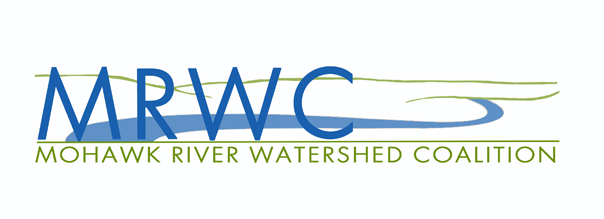The Mohawk River Watershed Management Plan, developed through a collaborative effort, recommends actions that communities can take to restore and preserve the watershed. The Plan, which can be viewed or downloaded at the links below, is supported by an interactive mapping tool that presents detailed information about watershed boundaries, hydrology, soils, residential development, habitat, infrastructure, pollution, floodplains, governance, and more. As the Plan is implemented over time, these maps will be updated to show specific projects and activities at the subwatershed scale.
View/download the complete plan (PDF, 28 mb), or the individual chapters in the tabs below.
Related Links
Development of the Mohawk River Watershed Management Plan was guided by a vision for the future in which the Mohawk River Watershed's natural hydrologic conditions are respected; diverse fish and wildlife habitats and agriculture are flourishing, and superior water quality is celebrated; and vibrant watershed communities find prosperity in the strong economy where water-based recreation and tourism thrive along the waterfront.
To pursue this vision, the Mohawk River Watershed Advisory Committee adopted seven goals:
- Protect and restore the quality and ecological function of water resources.
- Protect and enhance natural hydrologic processes.
- Promote flood hazard risk reduction and enhanced flood resilience.
- Protect, restore, and enhance fish and wildlife habitat.
- Revitalize communities and waterfronts and adopt Smart Growth land use practices.
- Promote agriculture and other working landscapes.
- Increase watershed awareness.
Read the Executive Summary of the Mohawk River Watershed Management Plan. (PDF, 1 mb)
CHAPTER 1: Introduction provides an overview of how the Mohawk River Watershed Management Plan was developed, and offers background information on the value of watershed planning in general. It discusses specific challenges to implementation that must be addressed in order to realize the vision for a healthy and economically vibrant Mohawk River Watershed.
View/download Chapter 1 (PDF, 3 mb)
CHAPTER 2: Watershed Characterization describes both the natural environmental setting and the cultural (human-influenced) conditions of the Mohawk River watershed. Readers will gain an understanding of the underlying environmental conditions in the watershed, as well as the constraints imposed by existing land use patterns and regulatory environment. This information provides a rational basis for restoration strategies and long-term protection recommendations proposed in later portions of the plan.
View/download Chapter 2 (PDF, 14 mb)
CHAPTER 3: Subwatershed Assessment evaluates the current state of the Mohawk River Watershed based on quantitative indicators for water quality, land use, and habitat. These metrics are analyzed for subwatershed units within each of the three main watershed regions: the Upper Mohawk, Main River, and Schoharie Watershed. A resulting set of scores is used to categorize the health of subwatersheds as low, medium, or high. This assessment forms the basis for remediation and protection priorities in specific portions of the watershed, and for the restoration and protection recommendations discussed in Chapters 4 and 5.
View/download Chapter 3 (PDF, 3 mb)
CHAPTER 4: Recommendations describes recommended actions and practices for meeting watershed goals, which are grouped into three general approaches: Best Management Practices, Municipal Actions, and Collaboration and Partnerships. Recommended actions and practices are based on current conditions of the natural and built environment, and reflect the unique conditions of each community and subwatershed. Not every action or practice described in this chapter is appropriate for every site or community within the watershed. More specific recommendations are included in Chapter 5.
View/download Chapter 4 (PDF, 800 kb)
CHAPTER 5: Implementation, Tracking, and Monitoring presents strategies and priorities for implementing the recommendations set forth in Chapter 4, along with an approach to monitoring their effectiveness. Organized by the three main regions of the Mohawk River Watershed—Upper Mohawk, Main River, and Schoharie Watershed—this discussion focuses on HUC-10 subwatersheds exhibiting low assessment scores. Many of the recommended actions and practices tend to focus on restoration of subwatersheds that exhibit degraded conditions, while others are designed to be protective. Specific projects are suggested for municipalities within the watershed, providing data on cost, timing, potential funding sources, lead organization, and measures for tracking success over time.
View/download Chapter 5 (PDF, 16 mb)


